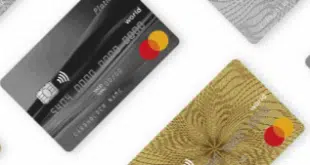Technology that allows consumers to pay at the point of sale by waving or tapping a card or other token took a major step forward today with J.P. Morgan Chase & Co.’s announcement that it will issue millions of cards equipped with the technology starting this summer.
Following on the heels of Chase’s move came news that two convenience-store chains, including c-store titan 7-Eleven Inc., are adopting the technology, known as contactless payments. 7-Eleven says it plans to install contactless readers in all 5,300 stores it operates in the U.S., following a 170-store pilot.
Meanwhile, Sheetz Inc., a 309-store chain based in Altoona, Pa., announced it has completed installation of its contactless system and added it is issuing a co-branded contactless card with Chase. It announced earlier this year it would adopt the technology, which speeds card-based transactions by replacing swipes with radio signals, and issue its own card (Digital Transactions News, Jan. 3). It expects to have 100,000 cards issued by year’s end.
But, in the absence of interchange-pricing incentives, widespread merchant acceptance for radio-frequency-based technology may be slow, given the need to deploy readers and other costs, some experts warn, even as issuance builds. Observers now expect other major issuers that have experimented with contactless technology to move on to rollouts of their own. Along with Chase, Citigroup Inc. and MBNA Corp. have participated in pilots conducted by MasterCard International, whose contactless program is called PayPass. Earlier this year, Visa USA unveiled a platform for contactless transactions.
“There may be a bit of a deluge now” in card-issuance, says Nick Holland, director of the emerging technologies advisory service at Mercator Advisory Group, Shrewsbury, Mass. “I’m glad to see Chase is finally biting the bullet.”
Chase’s investment in the new technology is significant. The cards themselves? The bank makes no mention of other form factors that have been tested before, such as cell phones or keyfobs cost around $1 each, Holland estimates, compared to around 20 cents for a conventional mag-striped card. In addition, the bank says it will try to pump up consumer interest in the technology with major advertising campaigns and new rewards programs linked to usage. It did not give further details and Chase officials were unavailable for comment. Sheetz says its card, which operates on the PayPass platform, will offer free gasoline and other merchandise at its stores as a reward for usage.
To pique consumer interest, the bank is calling its new cards “Chase cards with blink,” referring to the tone receivers sound when the cards are waved near them to make a transaction. Ads, for example, will exhort cardholders to “blink a drink” or “blink lunch” at participating merchants. Chase says it will begin issuance this summer in what it calls a “market-by-market” rollout. It is expected to issue the cards, for example, as it rebrands and replaces cards that had been issued by Banc One Corp., which Chase acquired last year.
But achieving deep merchant penetration in each market for the technology may be another matter, observers say. So far, neither MasterCard nor Visa has been willing to cut interchange rates for contactless payments, which means merchants must buy and install receivers, which cost around $150 each, that will process transactions at the same rate they’re paying for conventional card transactions. Also, the card networks have positioned contactless payments as a cash replacement for low-value transactions, for example waiving the signature requirement for transactions under $25.
Many merchants will likely balk at replacing relatively cheap cash transactions with pricier card payments. “That’s going to be quite a barrier to entry for merchants,” says Holland, who has followed contactless developments closely. Merchants with heavy throughput demands at peak times, such as McDonalds Corp., which has adopted PayPass, might see a business case, Holland argues, but smaller merchants will be harder to convince.
Also, the absence of payment tokens besides cards in the marketplace, such as the nearly ubiquitous cell phone–might also make it harder for merchants to justify the expense of buying and installing readers, he adds. Nonetheless, Chase says it plans to recruit “hundreds” of merchants in each market it enters, promising it will have “thousands” of locations accepting the new cards by the end of the year. Another J.P. Morgan Chase company, Chase Merchant Services, is a major merchant acquirer for card transactions.
For its part, Sheetz says the lack of a break on interchange for contactless is of no consequence, since it views the transactions as a way to speed up existing card payments rather than as a replacement for cash. “I wouldn’t expect these transactions would replace cash at all,” says Rich Steckroth, manager of new business development for the chain.
Contactless technology relies on radio signals transmitted from a chip embedded in a card or other token to carry account data to a POS terminal equipped with a receiver. The signals replace the conventional swipe of a mag stripe, but once received at the terminal the transaction proceeds as in a conventional card payment.
In addition to Sheetz, 7-Eleven, and McDonald’s, other merchants accepting contactless payments include Regal Entertaiment Group, a collection of movie houses, and Ritz Camera Centers Inc. Pharmacy chain CVS Corp. is accepting similarly equipped cards from American Express Co.




